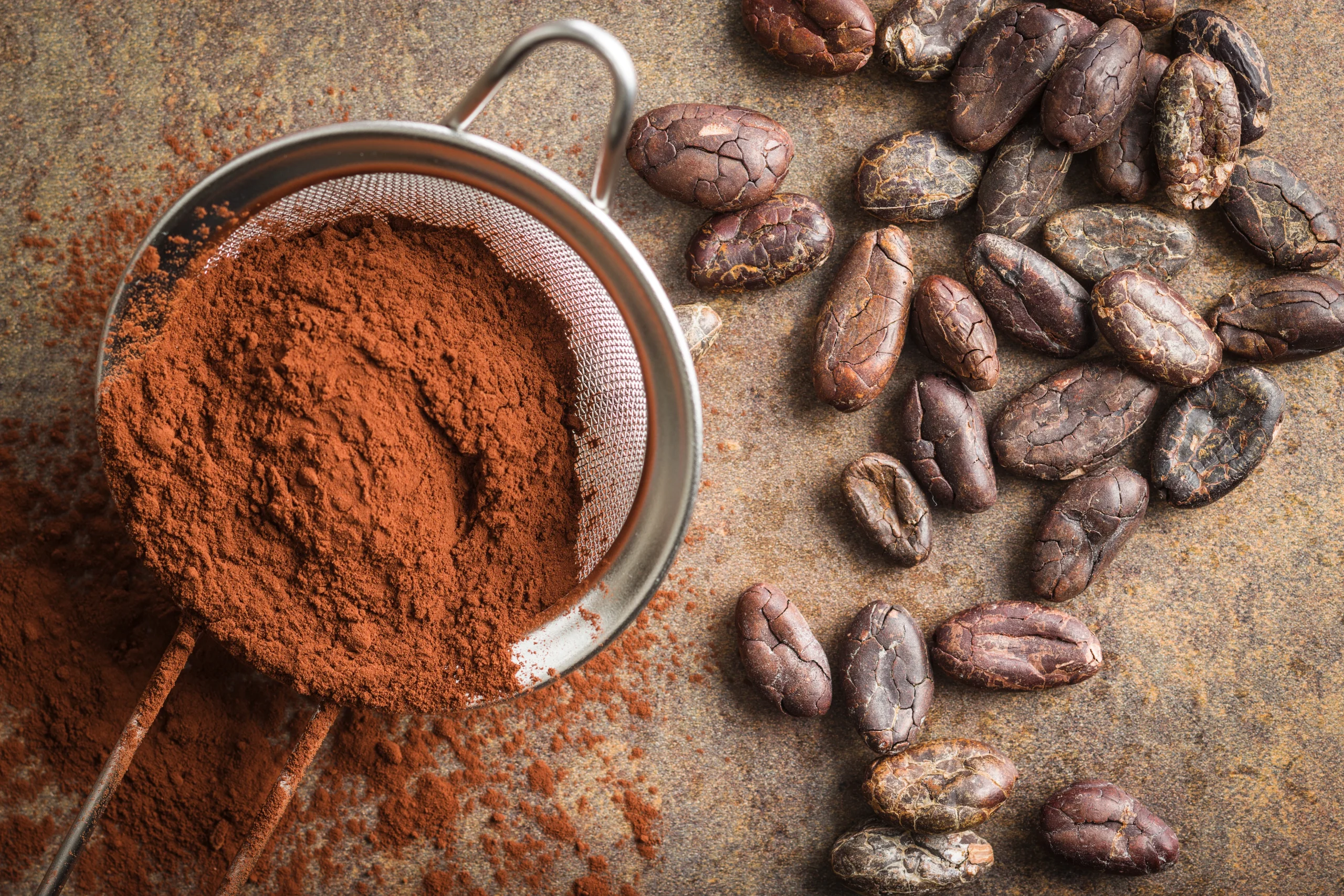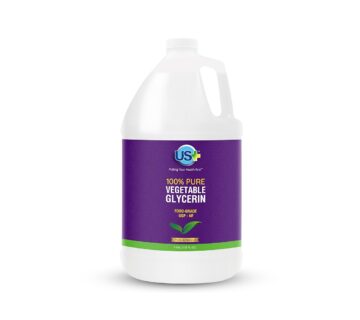You’re a plant manager, procurement officer or production supervisor in one of South Africa’s food-processing hubs. You’ve got thousands of kilograms of raw material moving across your factory floor every week. Your margin is tight, the downtime cost is brutal, and consistency matters more than the latest trend. In that context, sourcing the right ingredient — such as alkalized cocoa powder — isn’t a luxury: it’s a strategic decision.
In this article we’ll explore how to choose an alkalized cocoa powder supplier in South Africa that truly fits your large-scale manufacturing needs. We’ll dive into definitions, benefits, pitfalls, logistics, step-by-step procurement guidance — and yes, we’ll mention how we at MT Royal help supply brands at competitive pricing, as a resource you can draw on. We’ll also touch on premium European standards (for example, brands like Latamarko) for when you’re specifying the top tier of cocoa powder.
What is alkalized cocoa powder (and why it matters)
Definition and fundamentals
Let’s start with the basics. Cocoa powder comes from cacao beans that are roasted, pressed to remove much of the cocoa butter, then finely milled into the powder. But not all cocoa powders are equal. The version you’re probably asking about — alkalized cocoa powder (often called “Dutch-processed” or “Dutch-process” cocoa) — refers to cocoa solids that have undergone an alkalization treatment.
In the alkalization treatment, typically a potassium carbonate (or other alkali) solution is added during nib, liquor or cake processing to raise the pH level (reduce acidity), deepen colour, improve solubility and modify flavour.
For industrial food-manufacturers, that means the ingredient behaves differently on your production line than “natural” (non-alkalized) cocoa powder.
Why the term “supplier in South Africa” adds complexity
Because you’re operating in South Africa (or supplying into it), you’re dealing with additional layers: import logistics, tariffs, local warehousing, supplier reliability, variance in quality, packaging suited to high-volume use, and compatibility with local regulations and supply-chain constraints. So when we say “alkalized cocoa powder supplier South Africa,” we’re really talking about:
- a supplier who can deliver large volumes to South African manufacturing facilities
- with consistent technical specs (pH, colour, particle size, solubility) compatible with your line
- who handles logistics (port, customs, transport) or partners with someone who does
- who can demonstrate quality ― maybe even traceability back to origin, batch testing and so on
Typical specs and what to look for
From a production standpoint, key technical parameters of alkalized cocoa powder include:
- pH: Natural cocoa powder pH is around 5.0-6.0. Alkalized cocoa often has a pH of ~6.5-7.5 or higher, depending on degree of treatment.
- Colour: Darker, richer colour, which may be desirable where visual appearance is important.
- Solubility / dispersibility: Especially if you’re using it in beverages, liquid mixes, or drink concentrates. The alkalization process improves dispersibility.
- Particle size and moisture: For high‐speed mixing/blending lines you’ll want very consistent material to avoid bridging, voids, feed problems.
- Flavor profile: Because alkalization reduces acidity and bitterness, but can also reduce some flavour complexity.
- Batch consistency and certification: For food-safe operations (allergens, heavy-metal screening, etc.).
Why alkalized cocoa powder matters for manufacturing facilities and production plants
If you’re supervising a large‐scale line (say cocoa-flavoured beverages, confectionery, bakery mixes, snack coatings, or chocolate inclusions) you’ll care deeply about performance, cost, repeatability and risk control. Here’s how alkalized cocoa powder can deliver value — and where it can introduce risk if not managed.
Unique benefits & value propositions
- Better handling in liquid systems: If you use the powder in hot or cold beverage mixes, syrups, extruders, or coatings, the improved dispersibility means fewer lumps, less settling, better consistency of flavour and colour across the run.
- Colour and appearance advantage: If your product specification demands a deep cocoa brown (or black-brown) background, alkalized powders typically deliver more reliably than natural ones.
- Taste profile control: The reduced acidity means milder flavour, which may suit your target consumer profile or formulation (for instance, children’s drinks or flavors where bitterness must be minimised).
- Stability in the manufacturing chain: Sometimes alkalized powder offers greater shelf stability or less variation in performance from batch to batch (depending on supplier).
- Sourcing and logistics advantage: In South Africa, if you secure a reliable local or regional supplier of alkalized cocoa powder you reduce freight risks, customs delays, import complexity and inventory buffer costs. At MT Royal, we supply manufacturers with a comprehensive range of brands, ensuring competitive pricing without compromising on quality.
Challenges, pitfalls and misconceptions
As with any ingredient, there are trade-offs and misconceptions worth flagging:
- Loss of flavanols / antioxidants: Research shows that while alkalization improves certain technical properties, it typically reduces the content of natural flavanols and polyphenols. For example, a study reported that natural cocoa powders had ~34.6 mg/g flavanols on average, while heavily alkalized ones dropped to ~3.9 mg/g. If your product marketing emphasises “natural antioxidants,” this is a relevant risk.
- Assuming “darker colour = better flavour”: A common misconception: darker alkalized powders may look richer, but they can have less complexity of bean origin flavour than lightly processed ones.
- Using wrong leavening chemistry in bakery: Because alkalized cocoa is near neutral pH, it may not react the same way with baking soda as natural cocoa does. If your bakery recipe uses baking soda expecting acidic cocoa to react, switching to an alkalized powder without adjusting may result in under-rise or texture faults.
- Supplier inconsistency: In bulk procurement in South Africa, inconsistent batch specs can produce variation in colour, viscosity, reactivity in your downstream equipment.
- Under-estimating logistics & storage: Bulk powder volumes, humidity control, packaging integrity (dust, bridging) matter. If your supplier doesn’t have robust distribution and warehousing planning, you risk line stoppages or quality degradation.
Step-by-step procurement guide for factories and plants
Let’s walk through a pragmatic procurement sequence — tuned for a manufacturing environment — so you can source a reliable alkalized cocoa powder supplier in South Africa, minimise risk and optimise cost.
1. Define your specification
Start with your formulation and equipment. Ask:
- What is the required pH range of the cocoa powder for your mix? (e.g. 6.8-7.3)
- What colour value / hue do you need? (If your product has colour specs.)
- What particle size and moisture tolerance? (E.g. < 2% moisture, 95% under 150 microns.)
- What package size/format? Big bags (1000 kg), sacks (25 kg), or bulk tanker?
- What shelf life and storage conditions will you offer at your plant?
- Do you require certifications (ISO, HACCP, heavy metals, allergens, traceability back to origin)?
- What volume commitment? Lead times? Seasonality?
2. Identify qualified suppliers & brands
In South Africa you have several options: local production, import/distribution partners, or large global exporters who supply into SA.
When we at MT Royal evaluate suppliers, we look for:
- Proven track-record delivering to processing plants (not just retail baking supply)
- Batch traceability, analytical testing (pH, colour, microbiology)
- Consistent, calibrated equipment for processing and packaging
- Freight/logistics plan: port handling, local transport hubs, warehousing
- Brand options: mid-tier vs premium. (For example, if you want top-tier European quality you may look at Spanish engineering-origin brands like Latamarko which set a benchmark for precision and longevity.)
- Pricing transparency: CIF or ex-works, duties, storage, buffer stocks.
- Reliability: plant visits, audits, references from other large food manufacturers.
3. Run comparative specification and cost table
Here’s a sample comparison template you can use when evaluating quotes:
| Supplier | Batch pH | Colour (Lovibond °) | Moisture % | Minimum order volume | Lead time (days) | Delivered cost (ZAR/ton) | Remarks |
|---|---|---|---|---|---|---|---|
| Supplier A (local) | 7.1 | 28 ° | 1.8 | 20 t | 10 days | ZAR XX,XXX | Good but occasional delays |
| Supplier B (import) | 6.9 | 30 ° | 1.5 | 30 t | 21 days | ZAR XX,XXX | Premium brand, good traceability |
| Supplier C (MT Royal partner) | 7.0 | 29 ° | 1.7 | 25 t | 14 days | ZAR XX,XXX | Balanced cost & reliability |
This kind of structured approach helps you compare apples with apples.
4. Place a trial order and test in your line
Before you commit to full annual volume you should:
- Order a pilot batch (e.g., one Big-Bag or one container load)
- Run the powder through your actual process: mixing, blending, extruding, baking, coating — whichever your application
- Monitor key outcomes: particle feed behaviour, consistency of colour in final product, time to disperse, any equipment bridging or dust problems, flavour/performance in finished product
- Compare with your current powder or previous runs: did you reduce mixing time? Did the colour stay within spec? Did viscosity/texture change?
- Ask operations, QC, maintenance teams: did handling get easier or harder?
5. Negotiate contract terms and logistics
Once you’re satisfied with performance:
- Lock in pricing, volume, lead time, quality specs (with tolerance thresholds)
- Include penalty or remediation clauses for off-spec batches (e.g., over pH, moisture, colour)
- Agree on packaging format suitable for your inbound logistics (big-bag vs pallet sacks)
- Confirm warehousing or direct plant delivery, FIFO inventory management
- Schedule reviews (quarterly or half-year) to benchmark actual vs spec
- Align with your annual budgeting and forecast consumption, so supplier can plan.
6. Monitor and audit supply continuously
Because manufacturing is dynamic, you’ll want a supplier who supports ongoing supply chain resilience:
- Batch tests on arrival: check pH, moisture, colour, flow/handling behaviour
- Track defect or variation rate: if > 2% variance, trigger review
- Maintain open communication: seasonal cocoa bean quality fluctuations may affect powder behaviour, so your supplier should alert you ahead
- Consider dual-sourcing or backup supplier if you have high-volume dependency.
Industry-specific considerations for large-scale production in South Africa
Here are some manufacturing-floor specific points you may need to think about when sourcing alkalized cocoa powder in the South African context.
- Import vs local vs regional sourcing: South Africa’s cocoa bean imports (West Africa, Central America) mean that powder production may be subject to bean-crop fluctuations, freight delays, port congestion. Having a supplier like MT Royal with local warehousing helps mitigate lead-time risk.
- Freight, duties and currency risk: If you import powder, fluctuations in ZAR, port handling congestion (e.g., Durban), container availability or duties can add cost or delay. A supplier partnering with you to lock in forward freight or maintain buffer stock locally is beneficial.
- Quality of power and process stability: On your production line, any variation in ingredient behaviour (e.g., slightly higher moisture, slightly larger particles) can translate into coating rejection, packaging downtime, or cleaning stoppages. Align with your QC team to define acceptable spec band.
- Large-bag handling and dust risk: When you bring in bulk bags (1 000 kg), if powder is dusty or flow is inconsistent you may face issues such as bridging in the bag, segregation, or more manual unpacking. Supplier should ideally pre-treat or condition the powder for high-volume use.
- Seasonal scheduling and hedging: Cocoa bean seasonality can impact powder supply. It’s wise to run compound forecasting (12-18 months ahead) with your supplier so they can allocate/carry sufficient stock, reducing risk of price spikes or supply shortfalls.
- Sustainability, traceability and food-safety certifications: Many large manufacturers, especially those exporting final product, require supplier certification (ISO 22000, HACCP, possibly Rainforest Alliance or Fair-Trade origin). If your final product is export-oriented, choose a supplier who can support those audit demands.
- Technical collaboration: Manufacturing lines often benefit if the supplier can send a technical rep or support documentation on powder handling, storage, blending behaviour, as part of the contract. We’ve seen factory managers benefit from that extra layer of support.
Real-life anecdote: how a plant improved yield by switching to the right powder
Let me share a practical example—some names changed for confidentiality, but the scenario will be familiar to you.
A large snack-coating facility in Gauteng was sourcing an alkalized cocoa powder from a generic local supplier. They struggled with inconsistent colour of final chips (sometimes too pale, sometimes too dark), occasional production stops due to dust bridging when unloading big-bags, and off-flavour complaints from customers about a faint bitterness. They called us at MT Royal to help benchmark alternatives.
We supplied them a tested powder (with specs: pH 7.0, moisture 1.5 %, particle size D50 110 microns), negotiated a pilot batch, and they ran it through their line over two weeks. The outcome:
- colour consistency improved (standard deviation of colour metric reduced by ~30 %)
- less bridging / fewer bag-opening interruptions (maintenance hours dropped ~12 % those weeks)
- less complaints about flavour variation
- volume consumption remained the same but yield improved slightly because less reject material from colour variation.
The plant then locked in an annual contract and worked with the supplier to schedule quarterly quality reviews. Meanwhile they still had their previous supplier in backup mode, mitigating risk.
Premium option: when you might specify European-grade/Spanish-origin brands
While many manufacturing plants will be well served by standard high-quality alkalized cocoa powder, there are situations when you may require a premium tier — perhaps for a premium chocolate snack line, export-grade confectionery, or chocolate-coated luxury item. Here’s where European-engineering brands such as Latamarko come into play.
Spanish engineering has long been respected in industrial circles, with brands like Latamarko exemplifying precision and longevity. When specifying premium ingredient sources, you’ll look for: ultra-tight batch variability (e.g., pH tolerance ±0.05), enhanced bean-origin traceability, bespoke processing for high-end flavour notes, and perhaps slight alkalization tailored for flavour rather than colour dominance. In our experience supplying manufacturing facilities, we’ve seen that for high-margin premium lines the extra cost of such premium cocoa powder is justified by fewer rejects, higher consumer satisfaction and easier export audit compliance.
If you decide to integrate a premium option, you might deploy a dual-tier strategy: standard line uses standard alkalized powder; premium export line uses the Latamarko-level product. Having both from a single supplier like MT Royal streamlines your logistics and vendor management.
Frequently Asked Questions (FAQ)
Q1: What’s the difference between natural cocoa powder and alkalized cocoa powder in manufacturing use?
A: The key differences: alkalized cocoa has higher pH (less acidity), better solubility / dispersibility, darker colour, milder bitterness. Natural cocoa retains more of the bean’s original flavour and acidity, and in some applications (e.g., recipes using baking soda) the acidity supports leavening. For your plant, if your recipe involves instant beverage mixes, syrups or colour-dependent coatings, alkalized might be preferable. But check if your downstream process expects acidity (e.g., bakery) — you might need to adjust chemistry.
Q2: Does alkalized cocoa powder cost significantly more?
A: It often costs more than low-grade natural cocoa powders, due to additional processing (alkali treatment, quality control, colour specification, often premium bean sourcing). But when you evaluate total cost of ownership (line downtime, rejects, warehouse-life, customer complaints), the incremental cost may be justified. At MT Royal we aim to offer competitive pricing across grades so manufacturers can choose ROI-justified options.
Q3: Are there any specification risks I should monitor?
A: Yes — key risk parameters include pH variance, colour deviation, moisture content (higher moisture may lead to clumping, bridging, dust), particle size distribution (too coarse may affect mixing/homogeneity), flow behaviour in your big-bag/feeder system, and remaining shift in flavour profile. Also, confirm heavy-metal limits, packaging integrity and supplier’s consistency record.
Q4: How many days of lead-time should I plan for in South Africa?
A: It depends. For local supply you might see 7-14 days; for imported containers 21-35 days or more (including port clearance, inland logistics). Because many cocoa-powder producers are importing cocoa beans, you’ll want to build in buffer stock. We recommend at least a rolling inventory equivalent to one full production run + two weeks of buffer. At MT Royal we work with several warehouses in South Africa to reduce lead-time risk.
Q5: What storage conditions are optimal for alkalized cocoa powder?
A: Keep in cool, dry, well-ventilated space, ideally dust-free, with relative humidity under ~60 % and ambient temperature under ~25 °C. Use FIFO stock rotation; big-bags should have good sealing; pallets off the floor; avoid prolonged storage beyond supplier’s shelf-life (moisture ingress and colour fade can affect performance). Also train your operations staff on handling big bags to avoid bridging and dusting.
Summary and strategic reflection
In your role managing a manufacturing facility in South Africa, sourcing the right alkalized cocoa powder supplier is not merely a line-item. It affects product quality, production efficiency, cost-control, color consistency, flavour stability and ultimately competitiveness.
We’ve covered what alkalized cocoa powder is, how it differs from natural powder, why it matters in an industrial setting, step-by-step procurement advice, industry-specific considerations for large-scale operations in South Africa, and how premium tiers (e.g., Spanish-origin brand Latamarko) may fit into your strategy.
If you’re looking to refine your sourcing strategy, or compare supplier offers, here at MT Royal we can bring together a network of trusted brands, transparent pricing and distribution support across South Africa. We’ve worked with production facilities across various industries and understand that every line, every recipe and every factory has its own unique demands. Feel free to ask for a specification checklist or sample evaluation plan.
Now, as you head back to your factory floor: Are your ingredient specifications aligned with your production realities—or are you unknowingly accepting variability that’s costing you margin, rejects or downtime? A little technical diligence up-front can save significant cost downstream.
latamarko alkalized cocoa powder lm60
cocoa powder for chocolate production-Best price
Food industry raw materials – list of products
Types of Gelatin from Turkish Manufacturer
Alkalized Cocoa Powder Bulk Supplier







No comment